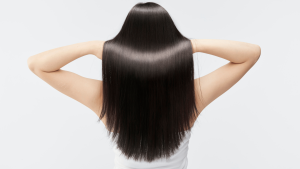Seasonal changes are a natural part of the year’s cycle, bringing with them shifts in weather, temperature, and humidity. While these changes can refresh the environment and influence mood and energy levels, they can also take a toll on your hair. From the drying effects of winter to the humidity of summer, each season presents unique challenges that can weaken strands, lead to hair breakage, and cause scalp issues.
The key to maintaining healthy, strong hair year-round lies in understanding how the environment impacts it and adjusting your hair care routine accordingly. This guide provides expert tips and strategies to help you protect your hair through every seasonal shift, ensuring it stays strong, shiny, and vibrant no matter what time of year it is.

The Ultimate Guide to Keeping Hair Strong During Seasonal Changes
Understanding Seasonal Hair Changes
Different seasons affect hair in specific ways due to variations in temperature, humidity, and sun exposure. In winter, cold air and indoor heating strip hair of moisture, leading to brittleness and static. Spring can cause a spike in hair shedding as part of the natural growth cycle. Summer’s heat, UV rays, and chlorine from pools can dry out hair and fade color, while autumn may bring dryness and increased breakage as temperatures start to drop. Recognizing these patterns is the first step in taking proactive care. By anticipating what your hair will likely need, you can prevent damage before it starts and avoid seasonal hair slumps altogether.
Hydration Is Key Through Every Season
Keeping your hair hydrated is critical year-round, no matter the climate or conditions. Cold winter air and indoor heating can strip away moisture, while summer heat, sun exposure, and pool chemicals can be equally drying. To maintain softness and strength, choose hydrating shampoos and conditioners that lock in moisture and replenish lost nutrients. Weekly deep-conditioning treatments or leave-in masks can make a noticeable difference. It’s also important to nourish your hair from the inside out by drinking plenty of water and eating a balanced diet rich in essential nutrients. Healthy hydration habits will help your hair remain resilient, shiny, and manageable no matter the season.
Adjust Your Hair-Washing Routine
How often you wash your hair, and the type of shampoo you use should vary with the seasons. In the winter, over-washing can lead to dryness and scalp flakiness, so aim to wash less frequently and use sulfate-free, moisturizing shampoos. In summer, sweat and outdoor activities may require more frequent cleansing, but harsh shampoos can strip away natural oils. Consider using a clarifying shampoo weekly to remove product buildup and a gentle cleanser for regular use. Incorporating co-washing (using conditioner instead of shampoo) during particularly dry periods can help retain natural moisture without compromising cleanliness. That said, if you’re experiencing persistent dryness or buildup despite these adjustments, exploring the best scalp treatment options can provide targeted care to restore your scalp’s balance and support healthier hair growth.
Scalp Care Is Seasonal Too
Healthy hair starts with a healthy scalp, and just like your skin, your scalp’s needs shift with the seasons. In winter, dry, itchy scalps are common, so using an oil-based scalp treatment or a gentle exfoliating scrub can help remove flakes and promote circulation. In warmer months, excess sweat and oil can clog follicles, leading to irritation or even hair thinning. Use a clarifying treatment or tea tree oil-based product to keep the scalp clean and refreshed. Massage your scalp regularly to stimulate blood flow and support healthy hair growth year-round. Treating your scalp with the same care you give your face will lead to stronger, shinier hair.
Protective Styles and Heat Management
Heat styling and tight hairstyles can damage your hair regardless of the season, but their effects can be especially harmful during periods of environmental stress. During winter, avoid using hot tools too frequently, as your hair is already susceptible to breakage. In summer, try to minimize heat styling to prevent additional dryness from sun exposure. Embrace protective hairstyles like braids, buns, and twists, which reduce manipulation and help retain moisture. If you must use heat tools, always apply a heat protectant to create a barrier between your hair and the high temperatures, and try to air-dry your hair whenever possible.
Seasonal Diet and Supplements for Hair Health
What you eat has a direct impact on your hair’s strength and growth, and your nutritional needs may shift slightly with the seasons. During winter, diets tend to lack fresh produce, which can affect vitamin intake. Make sure to consume foods rich in omega-3 fatty acids, protein, iron, zinc, and vitamins A, C, D, and E. These nutrients support scalp health and hair follicle strength. In summer, increased sun exposure may aid in natural vitamin D production, but hydration and antioxidants become more important due to UV damage. If you’re not getting enough nutrients from your diet, consider hair-specific supplements with biotin and collagen, but consult a healthcare provider before starting any new regimen.

The Ultimate Guide to Keeping Hair Strong During Seasonal Changes
Keeping your hair strong and healthy throughout the year requires a thoughtful approach that adapts to the changing environment. By understanding how each season impacts your strands and scalp, adjusting your routine to include hydration, protective styles, proper cleansing, and supportive nutrition, you can maintain hair vitality regardless of external conditions. Seasonal changes may be inevitable, but damage and dullness don’t have to be. With consistency and care, your hair can thrive in every season.

fashionabc is a fashion technology platform, comprising a digital directory and various other digital tools and supply chain solutions for the fashion industry ecosystem, that focus on ethical fashion and sustainability. We are building inclusive digital transformation tools for fashion professionals who are willing to take steps towards a more sustainable ethical fashion industry, by adopting AI and DLT blockchain technology.
* building digital profile and IP solutions for fashion businesses
* tackle issues such as provenance and counterfeit in supply chain
* contribute to the construction of a meritocratic ethical fashion industry which is certified and part of the circular economy










